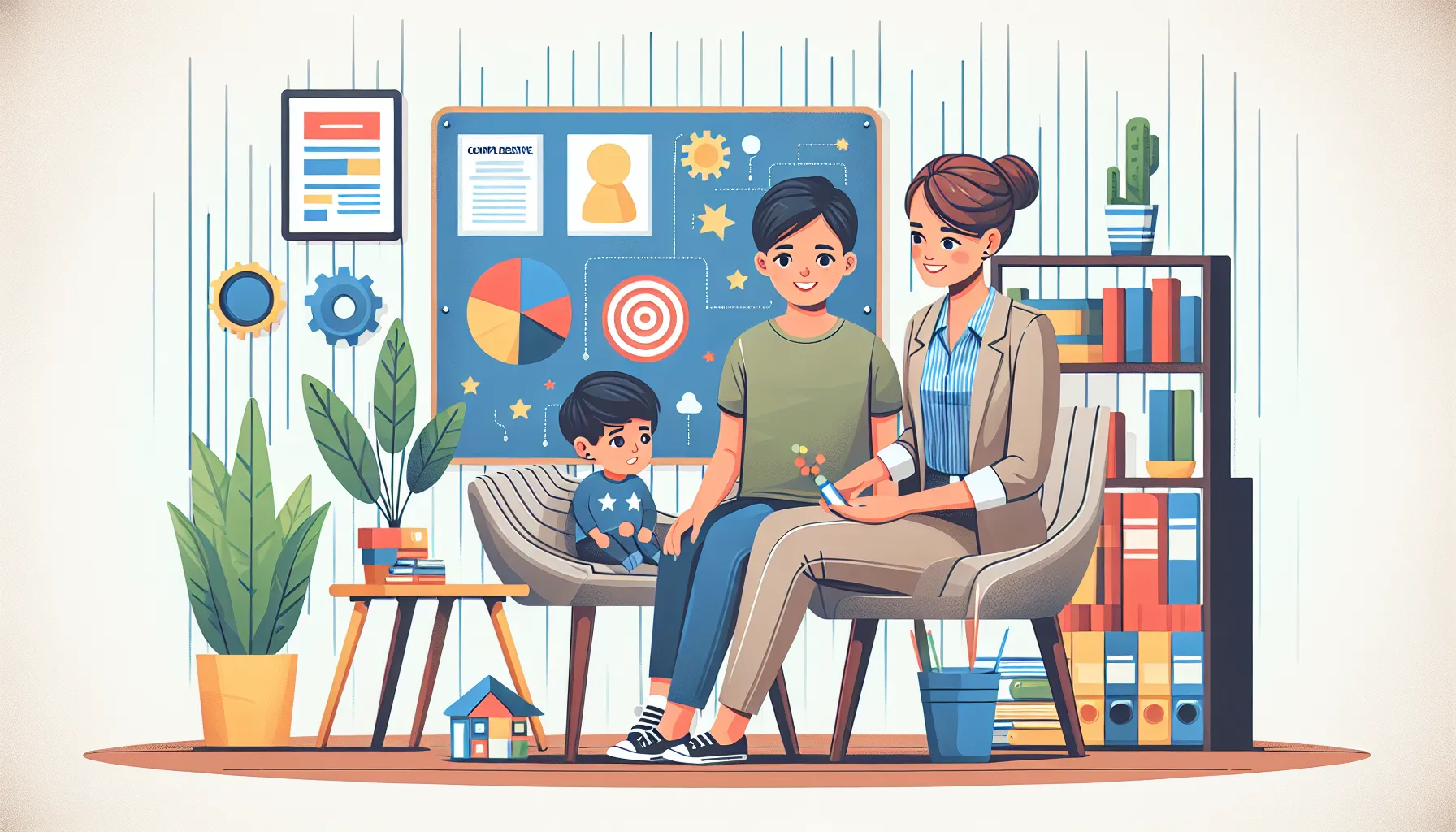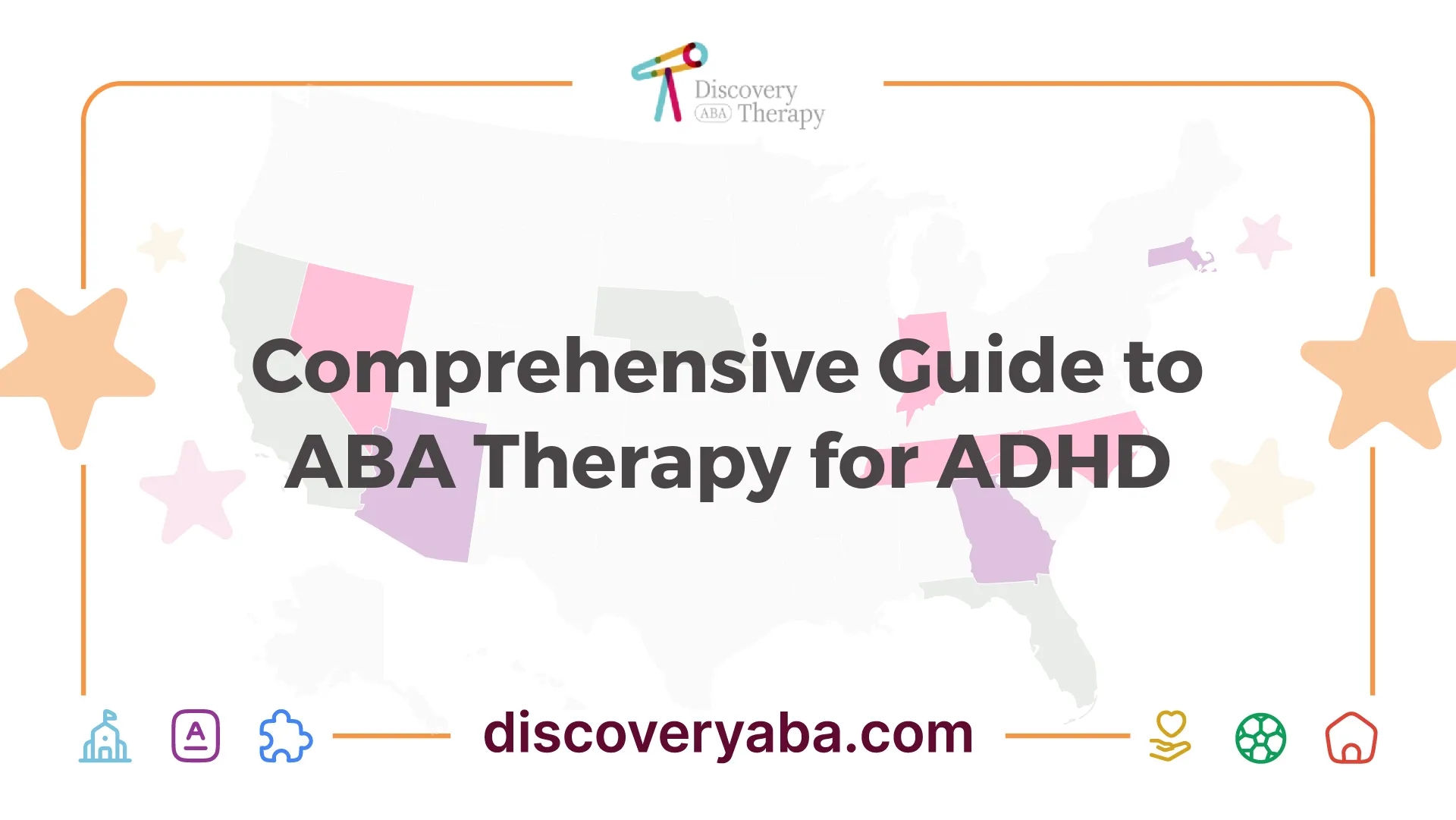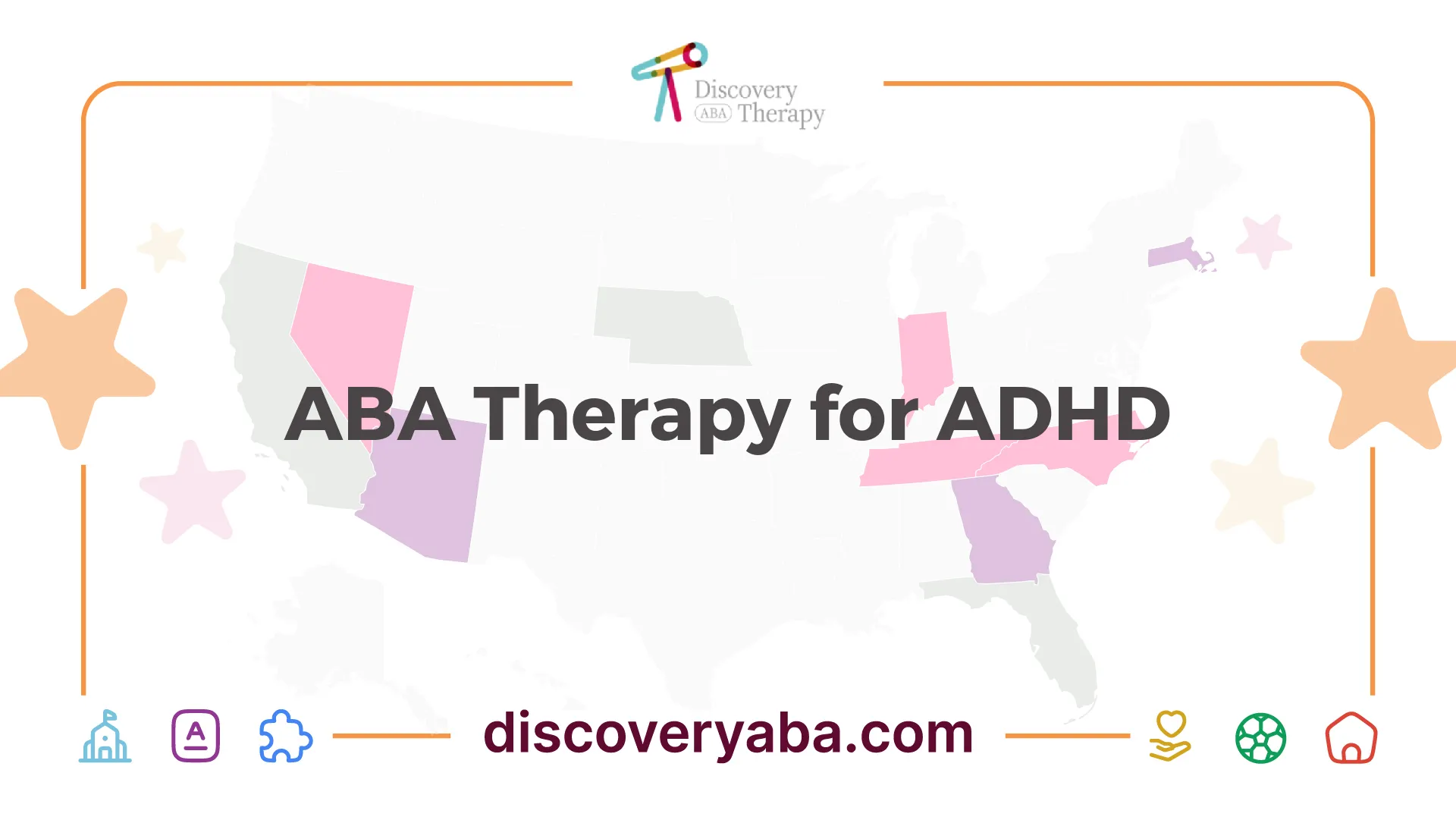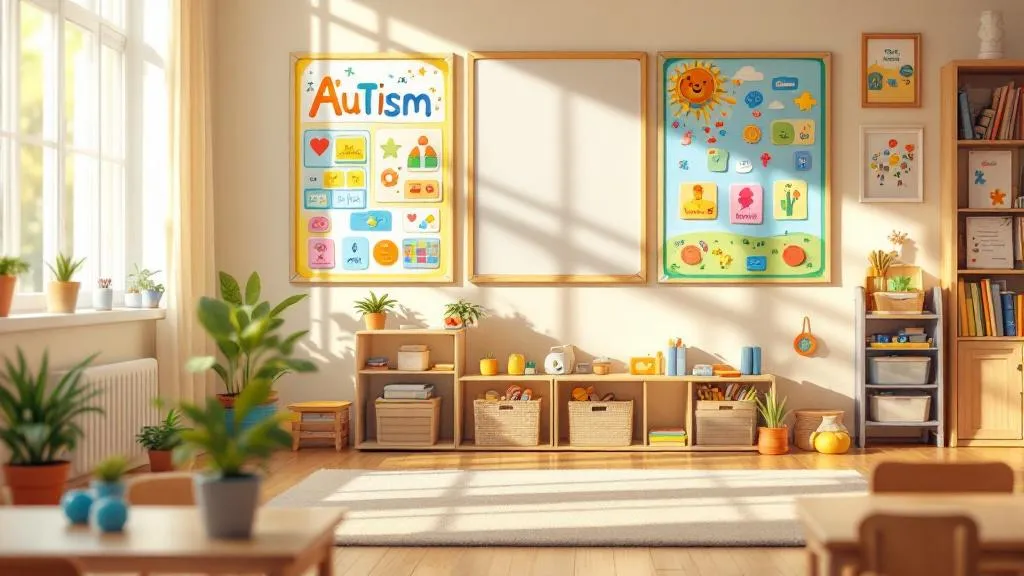Comprehensive Guide to ABA Therapy for ADHD
Discover a comprehensive guide to ABA therapy for ADHD, exploring techniques, benefits, and effective strategies.

Understanding ABA Therapy
Applied Behavior Analysis (ABA) therapy is a widely recognized approach designed to improve behavioral and social skills, particularly in children with Attention-Deficit/Hyperactivity Disorder (ADHD). This section explores the fundamental aspects of ABA therapy, as well as its effectiveness in addressing the unique challenges associated with ADHD.

ABA Therapy Fundamentals
ABA therapy provides a flexible and customizable intervention, allowing therapists to tailor treatment to meet each child's specific needs. By focusing on the unique challenges faced by individuals with ADHD, ABA techniques aim to enhance positive behaviors while reducing disruptive ones. Proper ABA treatment involves conducting assessments, developing personalized plans, and collaborating with therapists and caregivers.
Some core principles of ABA therapy include:
The efficacy of ABA therapy is most pronounced when initiated early, even from the age of 2. Young brains are more adaptable to behavioral adjustments and learning, making early intervention critical for transformative results.
Effectiveness of ABA Therapy
The effectiveness of ABA therapy for ADHD spans various age groups, with particular emphasis on early intervention benefits. Research suggests that ABA strategies can condition more positive, functional behaviors in children with ADHD. The approach also promotes skill development by concentrating on behavioral interventions tailored to each child's symptoms and diagnosis.
Table 1 summarizes key outcomes associated with the implementation of ABA therapy for children with ADHD:
OutcomeDescriptionImproved Social SkillsEnhanced ability to interact positively with peers and adults.Reduction of Disruptive BehaviorsDecrease in action deemed inappropriate or harmful.Increased Attention SpanGreater ability to focus on tasks and activities.Better Impulse ControlEnhanced self-regulation while managing impulse control.
For more detailed insights into the long-term benefits, challenges, and evidence-based practices of ABA therapy, consider exploring our articles on long-term benefits of aba therapy for adhd and evidence-based aba therapy practices for adhd.
The combination of structured plans, parental involvement, and consistent application of techniques positions ABA therapy as an effective tool in managing ADHD symptoms and fostering developmental growth.
ABA Therapy for ADHD
ABA therapy (Applied Behavior Analysis) offers a structured approach for addressing the unique challenges faced by children with ADHD. Key components of this therapy include positive reinforcement and individualized strategies tailored to each child's specific needs.

Focus on Positive Reinforcement
A fundamental aspect of ABA therapy for ADHD is the emphasis on positive reinforcement. This technique encourages desirable behaviors by rewarding them, thereby gradually increasing the likelihood of those behaviors being repeated. By identifying what motivates a child, therapists can develop effective strategies to reinforce positive actions, such as completing homework or engaging in social interactions.
Research suggests that incorporating behavioral therapy, including positive reinforcement strategies typical of ABA therapy, can significantly improve outcomes for children with ADHD. For instance, children may learn skills that help them manage impulsivity and focus better, which can also lead to a potential reduction in medication doses if applicable. The American Academy of Pediatrics (AAP) recommends behavioral interventions for ADHD, especially for younger children, prior to considering pharmaceutical options.
Positive Behaviors TargetedRewards/ConsequencesHomework CompletionPraise, stickers, extra playtimeSocial InteractionSpecial privileges, token systemFollowing InstructionsSmall treats or tokens
Individualized Approaches
Individualization is a key feature of ABA therapy, making it particularly beneficial for children with ADHD. Therapy is tailored to address each child's unique challenges and strengths, allowing for a more effective intervention. This individualized approach begins with a Functional Behavior Assessment (FBA), which evaluates the underlying motivations for specific behaviors. During the FBA, a Board Certified Behavior Analyst (BCBA) assesses how different factors impact a child's behavior, using this information to create a customized treatment plan.
By adapting techniques to fit the individual needs of the child, ABA therapy facilitates improvements not only in behavior but also in social skills and emotional regulation. This flexibility ensures that interventions remain relevant and effective as the child grows and their needs change [6].
In conclusion, the combination of positive reinforcement and individualized approaches in ABA therapy creates a comprehensive framework for assisting children with ADHD. This methodology not only enhances behavior management but also equips children with the necessary skills to navigate daily life more effectively. For further insights into supporting children with ADHD through ABA therapy, explore our articles on long-term benefits of ABA therapy for ADHD and ABA therapy for ADHD-related challenges.
Benefits of ABA Therapy
ABA therapy offers a multitude of benefits for children diagnosed with ADHD. This therapeutic approach focuses on enhancing social skills and mitigating disruptive behaviors, which are common challenges faced by these children.
Improving Social Interactions
One of the key advantages of ABA therapy is its effectiveness in improving social interactions. By utilizing positive reinforcement techniques, ABA helps children learn and practice essential social skills. This targeted approach allows therapists and parents to focus on specific social deficits that a child may exhibit.
According to the National Institute of Mental Health, integrating behavioral therapy with stimulant medication can lead to more significant improvements in managing social interactions. As the child starts to demonstrate better social behaviors, their ability to communicate and engage with peers improves, fostering lasting relationships.
A notable aspect of ABA therapy is its flexibility to address individual needs. Each child’s therapy plan is tailored to their unique challenges, effectively promoting their strengths while teaching them replacement behaviors for negative social interactions. This personalized strategy is essential for enhancing a child’s confidence and social competence.
Reducing Problem Behaviors
Reducing problem behaviors is another significant benefit of ABA therapy. Children with ADHD often exhibit disruptive behaviors, such as impulsivity and inattention, which can impede their daily functioning. ABA employs evidence-based strategies to address these behaviors, leading to better overall behavior management.
Research indicates that consistent application of ABA techniques can help extinguish disruptive behaviors over time. By identifying the triggers for these behaviors and implementing appropriate interventions, therapists can significantly improve a child’s ability to manage their impulses and reactions.
In addition, ABA therapy conditions more positive and functional behaviors, allowing children to respond appropriately in social situations. This shift not only helps in reducing negative behaviors but also reinforces positive interactions, creating a supportive environment for growth and development.
Benefit of ABA TherapyDescriptionImproved Social InteractionsEnhances communication skills and relationships with peers.Reduced Problem BehaviorsDecreases disruptive actions, leading to better daily functioning.
The evidence supports that ABA therapy serves as an effective intervention for addressing the challenges faced by children with ADHD. For further information on how ABA can assist in managing ADHD-related challenges, check out our comprehensive guide on ABA therapy for ADHD-related challenges.
Implementing ABA Techniques
Applying effective ABA techniques is crucial for maximizing the benefits of therapy, especially for children with ADHD. Two key strategies in this process are establishing structured routines and utilizing visual aids.
Structured Routines
Structured routines play a significant role in ABA therapy for children with ADHD. Consistent schedules help create predictability, which can reduce anxiety and improve focus. By clearly defining daily activities and expectations, these routines enable children to develop time management skills and enhance their organizational abilities.
Routine FeaturesBenefitsConsistent ScheduleProvides predictability and reduces anxietyClearly Defined ActivitiesHelps children understand expectationsRepetitionReinforces learning and improves skill retention
According to the American Behavioral Therapy Association, structured routines in ABA therapy help children learn new skills and reduce problem behaviors by catering to their unique challenges.
Visual Aids Usage
Visual aids are an essential tool in ABA therapy for children with ADHD. These aids can include charts, checklists, pictograms, and other visuals that illustrate tasks and expectations. Visual aids help enhance focus and comprehension by providing clear and tangible information.
Type of Visual AidPurposeExample UsesChartsTrack progressReward systems and behavior trackingChecklistsBreak down tasksDaily routines and assignmentsPictogramsSimplify complex instructionsEvent schedules and activity guides
Using visual aids allows children to better manage their time and maintain organization. This method aligns with the emphasis on positive reinforcement in ABA therapy, as children can visually track their accomplishments and receive praise for completed tasks.
By combining structured routines with visual aids, practitioners can effectively target the challenges faced by children with ADHD. This dual approach enhances opportunities for skill development and encourages positive behavior modification. For more insights on the long-term benefits of ABA therapy, visit our article on long-term benefits of aba therapy for adhd.
Overcoming Challenges in ABA Therapy
When utilizing ABA therapy for ADHD, several challenges can arise, particularly with impulse control and the need for effective collaborative efforts.
Impulse Control
Children with ADHD often struggle with impulse control, leading to impulsive actions and disruptive behaviors. Addressing this challenge is essential to the effectiveness of ABA therapy. Therapists focus on consistently reinforcing positive behaviors while teaching self-regulation skills. This approach helps children learn to manage their impulses and exhibit more appropriate behavior. Research indicates that ABA techniques can effectively decrease impulsivity and hyperactivity while improving task completion and maintaining on-task behavior.
Impulse Control StrategiesDescriptionPositive ReinforcementEncouraging desired behaviors with rewards or praise.Clear InstructionsProviding concise and direct commands to minimize confusion.Reward SystemsImplementing a system where multiple positive behaviors lead to a reward.ConsistencyMaintaining a routine and predictable environment to promote self-regulation.
These strategies help condition more functional behaviors in children with ADHD, making it easier for them to manage their impulses over time. For additional information on overcoming challenges in ABA therapy, visit our page on aba therapy for adhd-related challenges.
Collaborative Efforts
Collaboration between therapists and educators is vital for the successful implementation of ABA therapy in school settings. Teachers play a crucial role in supporting a child's behavior and learning experiences within the classroom. By working closely with therapists, they can integrate ABA techniques and strategies into their daily routines. This cohesive approach ensures that the child receives consistent reinforcement across different environments, enhancing the efficacy of the therapy.
Effective collaboration may include regular meetings to discuss progress, sharing successful strategies, and aligning on behavior management plans. By fostering a team approach, both educators and therapists can create a supportive environment that addresses the unique needs of children with ADHD. For insights into specific practices within a collaborative framework, refer to our article on evidence-based aba therapy practices for adhd.
Through overcoming challenges related to impulse control and establishing strong collaborative efforts, ABA therapy can result in significant benefits for children with ADHD.
ABA Therapy in School Settings
Teacher Collaboration
Collaboration between teachers and therapists is essential for the successful integration of ABA therapy within school settings for children with ADHD. Teachers play a vital role in supporting a child's behavior and learning during classroom activities. By working closely with therapists, they can seamlessly incorporate ABA techniques and strategies into their daily routines.
A functional behavior assessment may be conducted by a Board Certified Behavior Analyst (BCBA) to evaluate the child's motivations for specific behaviors. This assessment helps teachers understand the function of these behaviors, enabling them to create a supportive learning environment tailored to the individual needs of each child with ADHD.
Through regular communication, teachers can receive guidance from therapists on implementing strategies that reinforce positive behavior and reduce disruptive actions. This collaborative effort ensures that both the educational and behavioral goals outlined in the child's ABA plan are consistently addressed.
Classroom Integration
Integrating ABA therapy into the classroom involves utilizing specific techniques and practices designed to support children with ADHD. Teachers can apply various evidence-based practices tailored to meet the unique challenges faced by these students.
ABA TechniquesApplication in the ClassroomPositive ReinforcementRewarding appropriate behaviors to encourage repetition.Structured RoutinesEstablishing clear and consistent daily schedules to help students know what to expect.Visual AidsUsing charts and images to provide reminders about tasks and expectations.
By employing these techniques, teachers can create an engaging and supportive atmosphere that fosters learning and behavioral improvement. Proper ABA treatment for children with ADHD emphasizes the importance of conducting assessments, developing plans, and engaging with both parents and therapists. This multifaceted approach helps to increase the child’s strengths, teaches replacement behaviors, and reduces disruptive actions.
For further insights into the application of ABA therapy in managing ADHD-related challenges, read our article on ABA therapy for ADHD-related challenges. By working collaboratively, teachers and therapists can enhance the effectiveness of ABA therapy, improving outcomes for students with ADHD in school settings.
References
[2]:
[3]:
[4]:
[5]:
[6]:
Does Your Child Have An Autism Diagnosis?
Learn More About How ABA Therapy Can Help
Find More Articles
Contact us
North Carolina, Nevada, Utah, Virginia
New Hampshire, Maine
Arizona, Colorado, Georgia, New Mexico, Oklahoma, Texas
.avif)




































































































